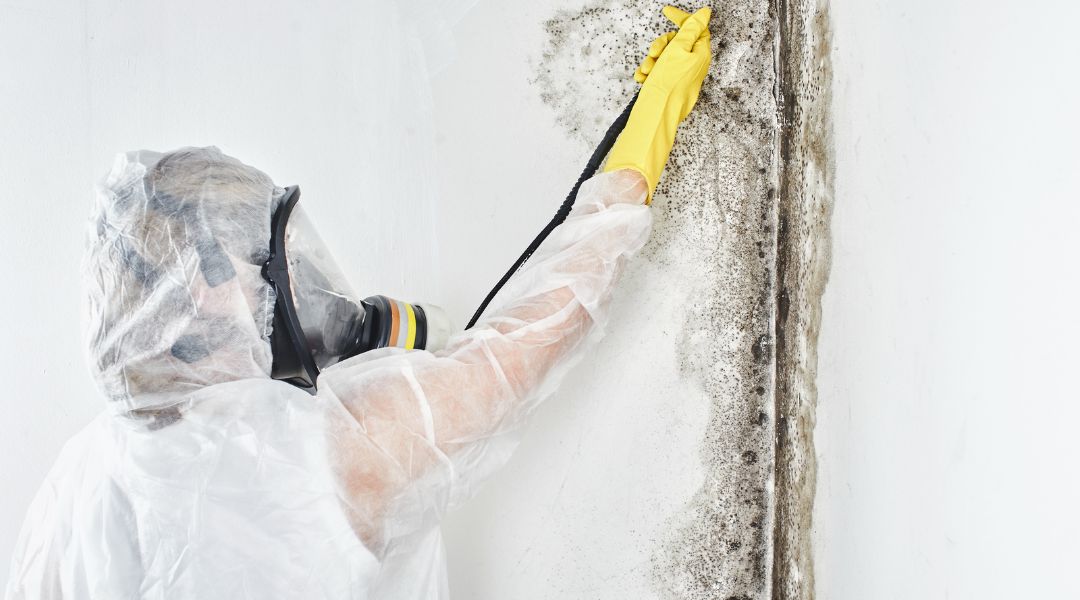
3 Signs of Black Mold and How to Get Rid of It
3 Signs of Black Mold and How to Get Rid of It
You may have heard of black mold, but do you know what it is and how to identify the signs? Black mold can cause serious health risks, so recognizing its warning signs is essential. It’s important to look for dark spots in damp areas or strange odors that could indicate a possible infestation of this type of fungus.
Other symptoms might include an irritated throat or allergies when spending time near the affected area. But don’t worry; there are ways to eliminate it before further damage occurs! Proper remediation involves removing excess water, cleaning properly with mild disinfectants, and using materials specifically designed for use against fungi, such as bleach-based products combined with antimicrobial sprays.
What is Black Mold?
Black mold is a type of fungus or mildew that grows in damp and poorly ventilated areas.
Also known as Stachybotrys chartarum, this species can grow on household materials such as wood products, ceiling tiles, cardboard boxes, and fabrics. Its presence often results from water damage due to excessive moisture caused by leaks in the walls or pipes. In small amounts alone, these molds are not harmful. However, if left untreated for an extended period, they can become toxic and cause health problems when inhaled into your lungs.
The color itself might vary depending on age, from greenish-black to grayish-white over time, with visible spots growing across surfaces inside your home, making identifying it easier than some types of houseplant pests.
Growth Spots of Varying Colors
Black mold is a type of fungus or mildew that grows in damp and poorly ventilated areas.
Also known as Stachybotrys chartarum, this species can grow on household materials such as wood products, ceiling tiles, cardboard boxes, and fabrics. Its presence often results from water damage due to excessive moisture caused by leaks in the walls or pipes. In small amounts alone, these molds are not harmful. However, if left untreated for an extended period, they can become toxic and cause health problems when inhaled into your lungs.
The color itself might vary depending on age, from greenish-black to grayish-white over time, with visible spots growing across surfaces inside your home, making identifying it easier than some types of houseplant pests.
Water Damage Spots
You may also encounter water damage spots in your home, often a sign of black mold. If you have had any flooding or leaks that caused moisture to build up on walls and other surfaces, inspect them closely for signs of discoloration. This can be anything from yellowing paint to dark gray staining. They all could indicate the presence of black mold in hidden areas like cavities behind wallpaper or beneath carpets and rugs.
Additionally, if there’s an unusually humid feeling within air-tight spaces when windows and doors aren’t open, it’s time to take matters into your own hands before things get worse! Prolonged dampness provides an ideal environment for breeding undesirable microorganisms, so don’t wait until symptoms worsen further!
A Musty Smell
Another sign of black mold is a musty smell. It’s usually caused by the fungus growing in moist, dark areas where air doesn’t circulate, such as behind furniture, baseboards, or window sills. The odor grows stronger over time if left untreated because more spores are produced with each growth cycle.
If you notice this type of scent in your home, it’s important to take action immediately before any health problems arise from extended exposure to these toxins.
How to Get Rid of Black Mold
The first step is to isolate and remove moisture sources contributing to its growth or spread. Inspect damaged areas for water intrusion and repair any leaks beforehand. This could help prevent future infestations as well. It’s also essential to ventilate high-humidity environments such as bathrooms, laundry rooms, basements, etc. Open windows often on sunny days and run dehumidifiers during damp weather when necessary.
Fungicides can act quickly but must be applied directly to the affected area only. To ensure this, ensure they don’t come into contact with any other items present at home, like furniture. If the fungicide comes into contact with these items, there will need to be extra effort and money put towards cleaning those items off again.
If a fungicide isn’t readily available, opt for a soap and bleach solution, which also works wonders. Just mix one part bleach with 10 parts warm or hot water before adding detergent until frothy bubbles start forming on top. Scrub all moldy spots using a sponge or rag dipped into this sudsy mixture. Afterward, let dry completely without wiping off the excess liquid residue left behind from the washing process first!
Prevent Black Mold In Your Home With CVE Corp
You may think DIY mold remedies are an option, but the reality is that without professional help, you can’t be sure to get rid of all of it. Even if you clean up what appears on surfaces and in air ducts, spores might have traveled elsewhere below your home or within walls, where they will continue growing. Their trained technicians know how to identify black mold growth in places such as crawl spaces and utilize their expertise when removing the potential damage caused by the infestation.
Furthermore, these firms offer guidance for future prevention and pointers on steps homeowners should take while remediation occurs. This reduces further risk coming from airborne contamination involved with elimination work. With preventive strategies considered before investing in costly support services down the road, protecting yourself against hazards posed by fungi becomes easier over time!
Understanding the signs and serious health risks of black mold is key to protecting your home. You should immediately detect any musty odors, water damage, or visible dark spots in your home. If you have seen these issues, it’s important that you contact a professional such as CVE Corp for help detecting and remediating this hazardous material from your property before other problems arise.
Professional remediation can be expensive, but protecting yourself, family members, and even pets from the potential health impacts associated with long-term exposure to black mold spores is necessary. Taking proactive steps towards recognizing harmful microorganisms like these will give you peace of mind, knowing that all those living inside are safe!



